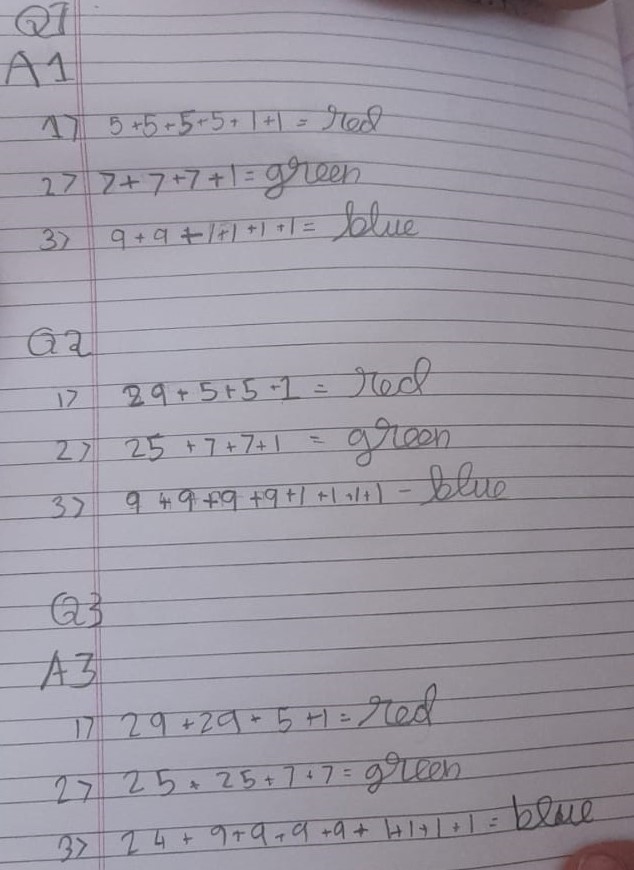Or search by topic
Number and algebra
Geometry and measure
Probability and statistics
Working mathematically
Advanced mathematics
For younger learners
Making Pathways



- Problem
- Student Solutions
- Teachers' Resources
Well done to everybody who had a go at this activity. We received lots of solutions from the children at Ganit Kreeda in Vicharvatika, India - thank you all for sending us your ideas.
Ishaan and Samaira sent in these solutions for Challenge 1:

Well done for working these out!
Hiren, Vansh, Eshaan, Rishaan, Samaira, Renah, Udit, Uday, Viha, Gowri, Arya, Vishnu, Krishna, Rivaan, Miraya and Vraj all worked on Challenge 2, and came up with the following solution:
We tried systematically starting with the smallest length size and if doesn’t work we used a bigger length. Here are our solutions. Together we got 2 for blue, 2 with green and 1 with red.
Blue 24+24+9+9+9, 24+24+24+1+1+1
Green 25+25+7+7+7+1+1+1+1, 25+25+25
Red 29+29+1+1+5+5+5
Well done for working systematically to find all of the possible solutions.
For Challenge 3, the children sent in these solutions of eight consecutive numbers that could be made with each colour:
Blue = 72, 73, 74, 75, 76, 77, 78, 79.
Red = 29, 30, 31, 32, 33, 34, 35, 36.
Green = 21, 22, 23, 24, 25, 26, 27, 28.
I agree that these numbers can all be made with these colours of paving slab, but what we'd really like to find is eight consecutive numbers that can be made with blue paving slabs, red paving slabs and green paving slabs (separately!). If you think you've found eight consecutive numbers that can all be made with each colour, please email us with your ideas.
You may also like
Worms
Place this "worm" on the 100 square and find the total of the four squares it covers. Keeping its head in the same place, what other totals can you make?
Which Scripts?
There are six numbers written in five different scripts. Can you sort out which is which?
Highest and Lowest
Put operations signs between the numbers 3 4 5 6 to make the highest possible number and lowest possible number.

